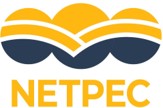Mechanistic understanding of the reduction process of CO2

The determination of an efficient CO2 reduction process – with respect to oxalate and carbon flakes as sink product – will be combined by the development of a prototype cell for the photoelectrochemical reduction of carbon dioxide. For this purpose, the coupling of pervoskite solar cells and liquid metal based catalysts to a functional and efficient electrochemical device has to be achieved, with this project part focussing on the improvement of the catalytic properties of the liquid metal based catalyst Galinstan.
To systematically improve the performance of the liquid metal catalyst, a detailed understanding of the electrochemical processes and reaction mechanisms at the catalytic surface and the catalyst/electrolyte interface is indispensable. This will be achieved by investigating the ongoing processes via (in operando) reflectance anisotropy spectroscopy (RAS), a spectroscopic method which yields unique and otherwise inaccessible information on the catalyst/electrolyte interface region .
The experimental studies will be accompanied by computational modeling, based on density functional theory (DFT). The CO2 reduction process on particularly structured catalytic surfaces will be investitgated, allowing for the subsequent determination of the resulting RAS spectra. These spectra will then be compared to the experimental ones, thus enabling a detailed atomistic understanding of the underlying mechanisms.






